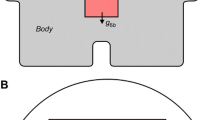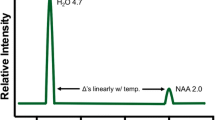Abstract
Therapeutic hypothermia is a treatment method to reduce brain injuries after stroke, especially for cerebral ischemia. This study investigates in the temperature distribution of the head within selective brain cooling (SBC). Anatomically accurate geometries based on CT images of head and neck regions are used to develop the 3D geometry and physical model for the finite element modeling. Two cooling methods, the direct head surface cooling strategy and the combination cooling strategy of both head and neck, are evaluated to analyze the inducing hypothermia. The results show that for direct head surface cooling, the scalp and skull temperatures decrease significantly as the blood perfusion rate is constrained, but it is hard to affect the brain core temperature. To achieve a lower cerebral temperature, combination cooling strategy of both head and neck is an effective method in improving deep brain cooling. In normal condition, the cerebral temperature is reduced by about 0.12 °C in 60 min of hypothermia, while the temperature drop is approximately 0.98 °C in ischemic condition.

In this study, the 3D geometry of the head and carotid artery model based on the computed tomography (CT) were derived separately and the corresponding investigations were conducted to validate the reliability of the model. Direct head surface cooling strategy and the combination cooling strategy of both the head and neck were numerically researched.









Similar content being viewed by others
References
Adeloye A, Kattan KR, Silverman FN (1975) Thickness of the normal skull in the American blacks and whites. Am J Phys Anthropol 43(1):23–30
Bernard SA, Jones BMC, Horne MK (1997) Clinical trial of induced hypothermia in comatose survivors of out-of-hospital cardiac arrest. Ann Emerg Med 30(2):146–153
Bernard SA, Gray TW, Buist MD, Jones BM, Silvester W, Gutteridge G, Smith K (2002) Treatment of comatose survivors of out-of-hospital cardiac arrest with induced hypothermia. N Engl J Med 346(8):557–563
Biem J, Koehncke N, Classen D, Dosman J (2003) Out of the cold: management of hypothermia and frostbite. Can Med Assoc J 168(3):305–311
Bogren HG, Buonocore MH, Gu WZ (1994) Carotid and vertebral artery blood flow in left-and right-handed healthy subjects measured with MR velocity mapping. J Magn Reson Imaging 4(1):37–42
Bommadevara M, Zhu L (2002) Temperature difference between the body core and arterial blood supplied to the brain during hyperthermia or hypothermia in humans. Biomech Model Mechanobiol 1(2):137–149
Busto R, Globus MY, Dietrich WD, Martinez E, Valdés I, Ginsberg MD (1989) Effect of mild hypothermia on ischemia-induced release of neurotransmitters and free fatty acids in rat brain. Stroke 20(7):904–910
Chenguang D, Liang Z (2006) Temperature distribution and blood perfusion response in rat brain during selective brain cooling. Med Phys 33(7):2565
Choi J, Marshall R, Neimark M, Konstas A, Lin E, Chiang Y, Mast H, Rundek T, Mohr J, Pile-Spellman J (2010) Selective brain cooling with endovascular intracarotid infusion of cold saline: a pilot feasibility study. Am J Neuroradiol 31(5):928–934
Cloots RJ, Gervaise HM, van Dommelen JA, Geers MG (2008) Biomechanics of traumatic brain injury: influences of the morphologic heterogeneities of the cerebral cortex. Ann Biomed Eng 36(7):1203–1215
Covaciu L, Weis J, Bengtsson C, Allers M, Lunderquist A, Ahlström H, Rubertsson S (2011) Brain temperature in volunteers subjected to intranasal cooling. Intensive Care Med 37(8):1277–1284
de Dear RJ, Arens E, Hui Z, Oguro M (1997) Convective and radiative heat transfer coefficients for individual human body segments. Int J Biometeorol 40(3):141–156
Dexter F, Hindman BJ (1994) Computer simulation of brain cooling during cardiopulmonary bypass. Ann Thorac Surg 57(5):1171–1178
Diao C, Zhu L, Wang H (2003) Cooling and rewarming for brain ischemia or injury: theoretical analysis. Ann Biomed Eng 31(3):346–353
Dietrich WD, Bramlett HM (2010) The evidence for hypothermia as a neuroprotectant in traumatic brain injury. Neurotherapeutics 7(1):43–50
Gunn AJ, Gunn TR, Gunning MI, Williams CE, Gluckman PD (1998) Neuroprotection with prolonged head cooling started before postischemic seizures in fetal sheep. Pediatrics 102(5):1098–1106
Hayward JN, Baker MA (1969) A comparative study of the role of the cerebral arterial blood in the regulation of brain temperature in five mammals. Brain Res 16(2):417–440
Horn M, Schlote W, Henrich HA (1991) Global cerebral ischemia and subsequent selective hypothermia. A neuropathological and morphometrical study on ischemic neuronal damage in cat. Acta Neuropathol 81(4):443–449
Hoyert DL, Xu J (2012) Deaths: preliminary data for 2011. Natl Vital Stat Rep 61(6):1–51
Huan W, William O, Giuseppe L, William E, Jean R, Debra H, Mary R, Jan B, David W (2004) Rapid and selective cerebral hypothermia achieved using a cooling helmet. J Neurosurg 100(2):272–277
Keller E, Mudra R, Gugl C, Seule M, Mink S, Frohlich J (2009) Theoretical evaluations of therapeutic systemic and local cerebral hypothermia. J Neurosci Methods 178(2):345–349. https://doi.org/10.1016/j.jneumeth.2008.12.030
Keller E, Mudra R, Gugl C, Seule M, Mink S, Fröhlich J (2009) Theoretical evaluations of therapeutic systemic and local cerebral hypothermia. J Neurosci Methods 178(2):345–349
Kim H, Park DH, Yi S, Jeong EJ, Yoon BC, Czosnyka M, Sutcliffe MP, Kim DJ (2015) Finite element analysis for normal pressure hydrocephalus: the effects of the integration of sulci. Med Image Anal 24(1):235–244
Kiyatkin EA, Brown PL, Wise RA (2010) Brain temperature fluctuation: a reflection of functional neural activation. Eur J Neurosci 16(1):164–168
Koehn J, Kollmar R, Cimpianu C-L, Kallmünzer B, Moeller S, Schwab S, Hilz MJ (2012) Head and neck cooling decreases tympanic and skin temperature, but significantly increases blood pressure. Stroke 43(8):2142–2148
Kollmar R, Schwab S (2012) Hypothermia and ischemic stroke. Curr Treat Options Neurol 14:188–196. https://doi.org/10.1007/s11940-012-0164-y
Konstas A-A, Neimark MA, Laine AF, Pile-Spellman J (2007) A theoretical model of selective cooling using intracarotid cold saline infusion in the human brain. J Appl Physiol 102(4):1329–1340
Li H, Chen RK, Tang Y, Meurer W, Shih AJ (2018) An experimental study and finite element modeling of head and neck cooling for brain hypothermia. J Therm Biol 71:99–111
Ma W, Liu W, Li M (2016) Analytical heat transfer model for targeted brain hypothermia. Int J Therm Sci 100:66–74
Nelson DA, Nunneley SA (1998) Brain temperature and limits on transcranial cooling in humans: quantitative modeling results. Eur J Appl Physiol Occup Physiol 78(4):353–359
Nikolov NM, Cunningham AJ (2003) Mild therapeutic hypothermia to improve the neurologic outcome after cardiac arrest. Surv Anesthesiol 47(4):219–220
Nybo L, Secher NH (2011) Counterpoint: humans do not demonstrate selective brain cooling during hyperthermia. J Appl Physiol 110(2):571–573
Pennes HH (1948) Analysis of tissue and arterial blood temperatures in the resting human forearm. J Appl Physiol 1(2):93–122
Poli S, Purrucker J, Priglinger M, Diedler J, Sykora M, Popp E, Steiner T, Veltkamp R, Bösel J, Rupp A (2013) Induction of cooling with a passive head and neck cooling device effects on brain temperature after stroke. Stroke 44(3):708–713
Qiu W, Shen H, Zhang Y, Wang W, Liu W, Jiang Q, Luo M, Manou M (2006) Noninvasive selective brain cooling by head and neck cooling is protective in severe traumatic brain injury. J Clin Neurosci 13(10):995–1000
Shimosegawa E, Hatazawa J, Ibaraki M, Toyoshima H, Suzuki A (2005) Metabolic penumbra of acute brain infarction: a correlation with infarct growth. Ann Neurol 57(4):495–504
Sven P, Jan P, Miriam P, Jennifer D, Marek S, Erik P, Thorsten S, Roland V, Julian BS, André R (2013) Induction of cooling with a passive head and neck cooling device: effects on brain temperature after stroke. Stroke 44(3):708–713
Thoresen M, Simmonds M, Satas S, Tooley J, Silver IA (2001) Effective selective head cooling during posthypoxic hypothermia in newborn piglets. Pediatr Res 49(4):594–599
Wang Y, Zhu L (2007) Targeted brain hypothermia induced by an interstitial cooling device in human neck: theoretical analyses. Eur J Appl Physiol 101(1):31–40
Wang H, Olivero W, Lanzino G, Elkins W, Rose J, Honings D, Rodde M, Burnham J, Wang D (2004) Rapid and selective cerebral hypothermia achieved using a cooling helmet. J Neurosurg 100(2):272–277
Wang H, Wang B, Normoyle KP, Jackson K, Spitler K, Sharrock MF, Miller CM, Best C, Llano D, Du R (2014) Brain temperature and its fundamental properties: a review for clinical neuroscientists. Front Neurosci 8(307):307–307
Wu T-C, Grotta JC (2013) Hypothermia for acute ischaemic stroke. Lancet Neurol 12(3):275–284. https://doi.org/10.1016/s1474-4422(13)70013-9
Xu X, Tikuisis P, Giesbrecht G (1999) A mathematical model for human brain cooling during cold-water near-drowning. J Appl Physiol 86(1):265–272
Young RW (1959) Age changes in the thickness of the scalp in white males. Hum Biol 31(1):74–79
Zhu L, Rosengart AJ (2008) Cooling penetration into normal and injured brain via intraparenchymal brain cooling probe: theoretical analyses. Heat Transfer Eng 29(3):284–294
Funding
The study is supported by China Postdoctoral Science Foundation (No. 2018 M640797), the open fund of Hubei key laboratory of mechanical transmission and manufacturing engineering in Wuhan University of Science and Technology (No. 2017A05), and the young researcher project funded by South China Normal University (No. 17KJ14).
Author information
Authors and Affiliations
Corresponding author
Ethics declarations
Conflict of interest
The authors declare that they have no conflict of interest.
Additional information
Publisher’s note
Springer Nature remains neutral with regard to jurisdictional claims in published maps and institutional affiliations.
Rights and permissions
About this article
Cite this article
Yin, L., Jiang, H., Zhao, W. et al. Inducing therapeutic hypothermia via selective brain cooling: a finite element modeling analysis. Med Biol Eng Comput 57, 1313–1322 (2019). https://doi.org/10.1007/s11517-019-01962-7
Received:
Accepted:
Published:
Issue Date:
DOI: https://doi.org/10.1007/s11517-019-01962-7




